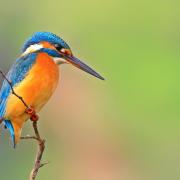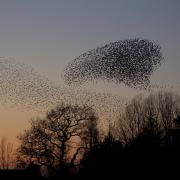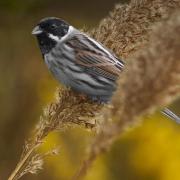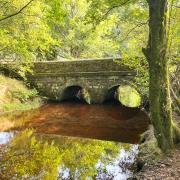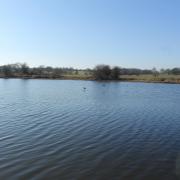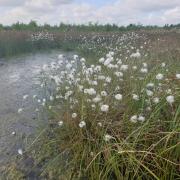Burying Christmas trees on the beach can encourage dunes which are good for wildlife and flood defence
If you don’t fancy eating your tree, you could try using it to improve flood defences and help wildlife.
Much of the focus of the recent COP26 event in Glasgow was on restricting global warming and slowing the rising sea levels. Millions of pounds are spent on flood prevention around the country every year and just a short walk along the beach from some of Lancashire’s newest sea defences at Fairhaven, a strikingly simple project is helping create natural defences.

Every year, hundreds of Christmas trees are partially buried on the beach at St Annes to encourage sand dunes to develop. These dunes offer protection from flooding as well giving a home to a wide range of flora and fauna.
The first trees were put into the sands in 2012 and something like 15,000 have been ‘planted’ since then.

Andy Mills, sand dunes area conservation ranger for Fylde Council, says: ‘Burying trees in this way to encourage dune growth had been done at different places before we tried it – including down the coast at Formby – and it has worked well for us here.
‘The Christmas trees provide a permeable barrier for sand that’s carried by the wind. They reduce the energy of the wind and collect the sand. It’s a really simple process but it works really well and makes a big difference.’

Each year there are collection points where people can drop off their trees and in the last few years Trinity Hospice has collected trees from driveways and garden in return for a small donation.
Before the pandemic, volunteers would help bury the trees and it is hoped to return to that system this Christmas.
'Last year was our biggest year ever,’ Andy adds. ‘We had about 2500 trees and no volunteers. It took six members of staff a week to plant all the trees.
‘The main reason for planting the trees is as a sea defence. As the sea level rises it will cause more issues in future, but the dunes are a natural defence. They are also a habitat for wildlife like butterflies, birds and sand lizards, as well as being popular recreational area. We see birds such as stonechat, skylarks and meadow pipits on the dunes, too. They are also important places for some rare flowers such as dune helleborine, Isle of Man cabbage and dune pansies.

‘We have a digger which creates a trench about a foot and half deep and we plant the trees at a 45 degree angle towards the sea and then back fill the trench. As they break down and decompose, the nutrients feed the grasses we plant.
‘The difference the Christmas trees have made is obvious – there are parts of the beach that had no dunes when we started, which now have 80 or 90 metres of dunes, and other places where the existing dunes have been extended.’
-
Planting will take place from February 9-11 2022. The Fylde Sand Dune Project is a partnership between Lancashire Wildlife Trust, Fylde Council and Blackpool Council. To find out more, go to lancswt.org.uk.












